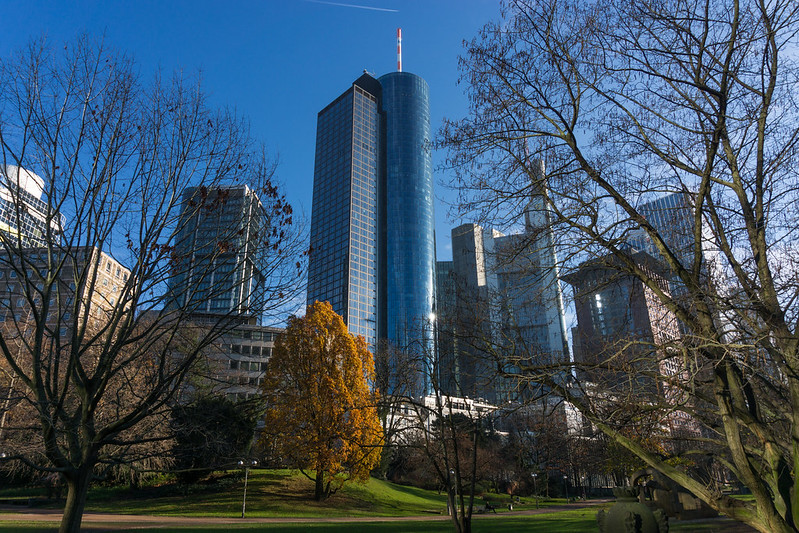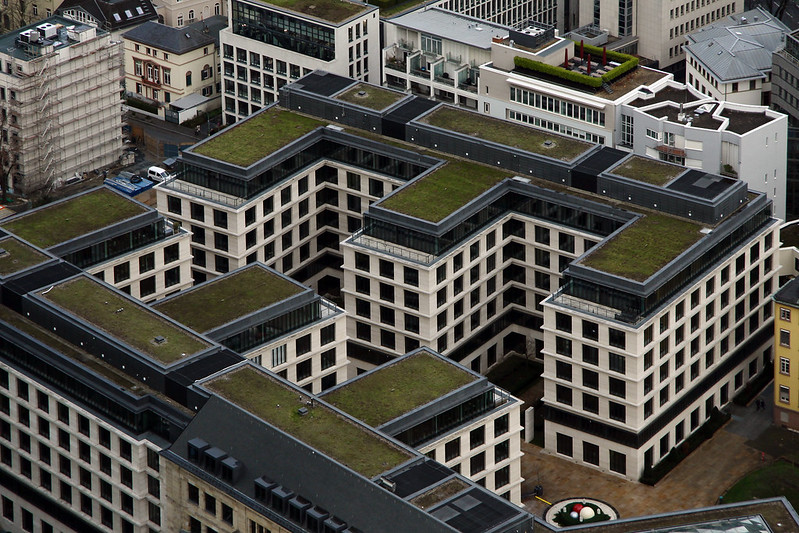5 ‘cool’ ideas that will stop Frankfurt getting too hot
Frankfurt is taking down the city heat and preparing itself for a scorching future.
I
n 2018, the warmest year in Germany’s history, Frankfurt was its warmest city. Projections of the impact of climate change on Germany mention Frankfurt as one of the locations most likely to be affected by future extreme temperatures.
However, Frankfurt is also one of the best-prepared cities in the world for adapting to climate change through measures to minimise the urban heat island effect.
Here are five ways in which Frankfurt is preparing to keep cool.
1. Luftleitbahnen (air corridors)
Frankfurt’s municipal government worked with DWD, the German weather service, to draw up a heat map of the city and project how climate change will affect it. The mapping exercise found that the difference in temperature between central parts of the city and suburbs on its rural outskirts can be up to 10 degrees Celsius.
The resulting knowledge enabled the city to plan luftleitbahnen, or air corridors, to encourage cooler air to flow towards the places most in need of cooling. Zoning regulations ensure no tall buildings can be developed in these corridors.
“We have to look at the whole city,” explains Hans-Georg Dannert, head of climate adaptation at the Frankfurt Environment Department. One such air corridor – along the Nidda, a small river which flows through the north of the city – can channel up to an estimated 40,000 cubic metres of cooling air into more central areas on a hot night.
2. Trees
Frankfurt is known for its open green spaces – over half the city’s land area is not developed, and it is home to Germany’s largest urban wood. According to MIT’s Treepedia, Frankfurt is among the world’s top 10 cities for tree cover. On average, the city’s residents live under 100 metres from a leafy green space – significantly better than the average for German cities.
Trees contribute to urban cooling in three main ways: they create shade, they store less heat than concrete, and they convert heat into moisture through transpiration.
As with the air corridors, linking open spaces to create green corridors is a deliberate policy. The city issues guidance on which species of tree to plant to increase variety and resilience to expected climate effects: “With very warm and arid summers, we have serious problems with domestic species like oak, maple and lime,” a city spokesperson told The Guardian, “so we try to plant species from the Mediterranean or Balkan areas”.

Tree contribute to urban cooling. Photo by barnyz/Flickr
3. Insulated buildings
In 2007, Frankfurt passed new regulations on “passive house” standards for newly built or refurbished municipally owned buildings. The city is about to open the world’s first hospital that meets passive-house construction standards, and it has more passive houses and efficient office buildings than anywhere else in Germany.
Mitigating rather than adapting to climate change is the main driver behind passive-house standards, which dramatically reduce the need for energy to be expended on heating or cooling: building codes are part of the city’s ‘climate masterplan’ that calls for all its energy needs to be met by renewables by 2050.
Nonetheless, better-insulated buildings also benefit adaptation because they mean less need for air conditioning. Studies have shown that the heat emitted by air conditioners can raise outside urban temperatures by over one degree Celsius on summer nights.
4. Green roofs
Green roofs and facades are another way in which building codes are helping to keep the city cool – they are required in some cases, and subsidised in others. Frankfurt’s airport, the largest in Europe, has an estimated 40,000 square metres of green roof space.
“Green roofs have numerous positive effects: they protect a building, they insulate and they cool it,” Lara-Maria Mohr, manager of the city’s Frankfurt Freshens Up project, explained to Euronews. As well as reducing the need for air conditioning, widespread adoption of green roofs has been calculated as lowering ambient temperatures across cities as a whole by as much as three degrees Celsius, according to one study.

Photo by David van Keulen/Flickr
5. More porous surfaces
Studies show that the porousness of road and pavement surfaces has a complex relationship with urban heat effects, but in combination with other considerations can potentially reduce night-time summer temperatures. City planners are favouring more porous surfaces, which also have the benefit of helping with water management – another adaptation priority.
The ideas presented in this article aim to inspire adaptation action – they are the views of the author and do not necessarily reflect those of the Global Center on Adaptation.